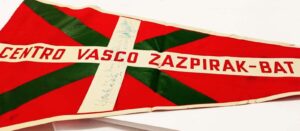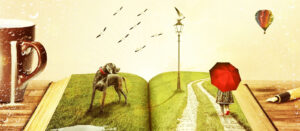Even though the body itself is an evolved ‘organic design’ that has allowed human beings to interact with their environment, it is the swathe of used and crafted objects that have served as extra-somatic extensions which, among other things, have allowed them to survive for prolonged periods of time. This relatedness is of such degree that it has made it difficult to discern the limits between one and the other. Formerly, the tools that allowed humans to hunt, feed, dress and protect themselves to survive, were outside the body, acting as extensions of hands and feet, operated through a central nervous system. In contrast, present-day tools or extensions have been transformed so much that they have entered the body, as a pacemaker does, or the implementation of neural chips —which promise to restore communication between the brain and the limbs of a person with motor disabilities— with the goal of emulating an organ in order to replace one that no longer works.
- From the Platonic and Cartesian understanding of the body to the Aristotelian and Maturanesque
The same account holds for touch and the tangible. For if touch is not one sense, but several, then it will be necessary for there to be several perceptible objects of touch as well. But there is a difficulty whether these are several or one, and another difficulty concerning what sensory organ belongs to the capacity of touch-whether this is flesh and something analogous in the other animals, or not, or if flesh is rather a medium, with the primary sensory organ being something else, something internal.
An anthropologist colleague used to say that there is nothing more foreign than the territory of the other’s body, but how is it then that the other knows better what my face looks like than I do myself, knows my features better, knows me with his/her eyes, and with the rest of his/her senses? One cannot fully grasp the texture of one’s skin and even the reflection seen in the mirror is reversed. For this reason, although we live in the era where technology has allowed us to look inside our body, we think the body in a platonic way, we see it mediated through the eye of the other or that of a machine. The body of the other is as foreign as our own, a sort of platonic beast-prison that can control our actions through pulsations, as if we were a centaur, whose human part looks with disdain at the animal or machine part.
“An anthropologist colleague used to say that there is nothing more foreign than the territory of the other’s body, but how is it then that the other knows better what my face looks like than I do myself, knows my features better, knows me with his/her eyes, and with the rest of his/her senses?”
Aristotle proposed to his teacher, in one of the most important meetings, to question the separation between soul and body, thus turning the body into a microcosm through which humans are able to relate to their environments, but operated by reason, which dominates the impulses that turn the body into that same idea of prison and beast. This was the state of affairs until Descartes, without any remedy, once again split man from his own body.
Despite being the Platonic and Cartesian discussions that maintained for a long time the idea of a body-mind as distinct entities, what remains today is the questioning of these divisions, the intention of a complex look towards the body, with the goal not to unite but to relate poles, to find agreements. Although the body is a whole, in practice it is not treated as such: medicine, for example, assumes organs and systems as divided in order to be studied through their particularities.
In Humberto Maturana’s preface to the second edition of “Of Machines and Living Beings”, we find a passage that could give a more adequate idea about the body and its possibilities, moving from pairs to integration:
Living beings exist in two domains, in the domain of physiology where our body dynamics take place, and in the domain of the relationship with the environment where our living takes place as the kind of beings that we are. These two domains, although different, modulate each other in a generative way, so that what happens in one changes according to what happens in the other.
Although several of these postulates are discussed in different disciplines, the truth is that we still construe the body in this way, because in reality the image of our body is just that, an image, which has been placed above our own experience, manipulating our perception through the social imaginary, the zeitgeist; making our body an idea, something almost foreign to our will, becoming an object that we submit, measure, categorize, and now also self-control with the objects that once served as its simple extensions: machines.
“…making our body an idea, something almost foreign to our will, becoming an object that we submit, measure, categorize, and now also self-control with the objects that once served as its simple extensions: machines.”
2. Boundaries between the body and objects
The human race has a long history of making tools, of the widest variety and technological sophistication, which today reaches the intangibility of the virtual field, in a process of cultural evolution which seems endless, and which concerns body and mind.
The raised problem of the body/mind relationship has given and continues to give much to talk about, especially in what constitutes the limits of the body. The following quote, product of neuroscience studies, from the Japan Neuroscience Society in the article written by Akira Murata and collaborators points out:
The hands have many functional roles during daily activities. Kamakura (1989) categorized eight functional roles of the hands: (1) exploring (i.e., sensing or exploring the environment), (2) contacts (i.e., holding an object or one’s own body), (3) acting as a joint (i.e., working like a joint between the body and an object), (4) tools (i.e., being used as a tools), (5) grasping, (6) manipulating objects or tools, (7) responding (i.e., as an object of action by another hand), and (8) symbolizing (i.e., making a sign). Recently, it has been revealed that the motor control system in the brain not only controls these complex hand actions, but also concerns body representation. The motor control system contributes to perception of the hands as part of the own body. Since the perception of one’s own body is the fundamental process of self-recognition (Gallagher, 2005), the hands are not only effectors in movement, but are a link between the mind and motor control.
It seems important to have a notion regarding the functional roles of the daily activities that we all carry out with our hands and that at the same time point to creative activity in terms of the production of artifacts. But to reflect on the motor control system in terms of the representation of the body, through the movements of our hands, takes on a different meaning about creative activity, on the one hand, and what it produces and could enter the body, on the other. What happens then when we handle a tool? That is, how do we perceive our hands and the tool? Or even, what happens to our perception of that tool when a prosthesis replaces our hands?
What happens then when we handle a tool? That is, how do we perceive our hands and the tool? Or even, what happens to our perception of that tool when a prosthesis replaces our hands?
If the human brain, through its sophisticated neocortex, recognizes the body, then when an object is created —product of a sum of collaborations between different minds—, it simply adheres to the surface of the body, it is articulated or inserted, does it mean then that for the brain the artifact is part of the body and not a foreign object? Are the other minds collaborating in the creation of objects also extensions of our body? Where does the body end and where does it begin? And what is really foreign to it?
does it mean then that for the brain the artifact is part of the body and not a foreign object? Are the other minds collaborating in the creation of objects also extensions of our body? Where does the body end and where does it begin? And what is really foreign to it?
All these questions must be formulated from different perspectives, in order to be answered. Cultural evolution will be that extension, tool or guideline that will give us another possibility, which I will address in a future text… because I then wonder, how has this relationship between the body and objects in time impacted us and our environment and other species in evolutionary terms?
Bibliography:
Aristotle. (2016). De Anima (Translated by Christopher Shields). Oxford: Clarendon Press.
Laland, K. (2017). Darwin’s unfinished symphony. Princeton: Princeton university press.
Malafouris, L. (2013). How things shape the mind. Cambridge, Massachusetts: MIT Press.
Maturana, H., & Varela, F. (2004). De máquinas y seres vivos. Santiago de Chile: Editorial Universitaria, Grupo Editorial Lumen.
Murata, A., Wen, W., & Asama, H. (2016). The body and objects represented in the ventral stream of the parieto-premotor network. Neuroscience Research, 104, 4-15. http://dx.doi.org/10.1016/j.neures.2015.10.010
Tiene estudios en Diseño Industrial por la Universidad Nacional Autónoma de México (UNAM) y Doctora en Antropología Física por la Escuela Nacional de Antropología e Historia (ENAH). Su trabajo académico se enfoca en vincular y fomentar el intercambio interdisciplinario entre la Antropología y el Diseño. Cuenta con larga experiencia en el manejo de materiales cerámicos a nivel industrial y artesanal. Sus intereses se centran además en la experimentación musical, así como la exploración gastronómica y el arte culinario.


